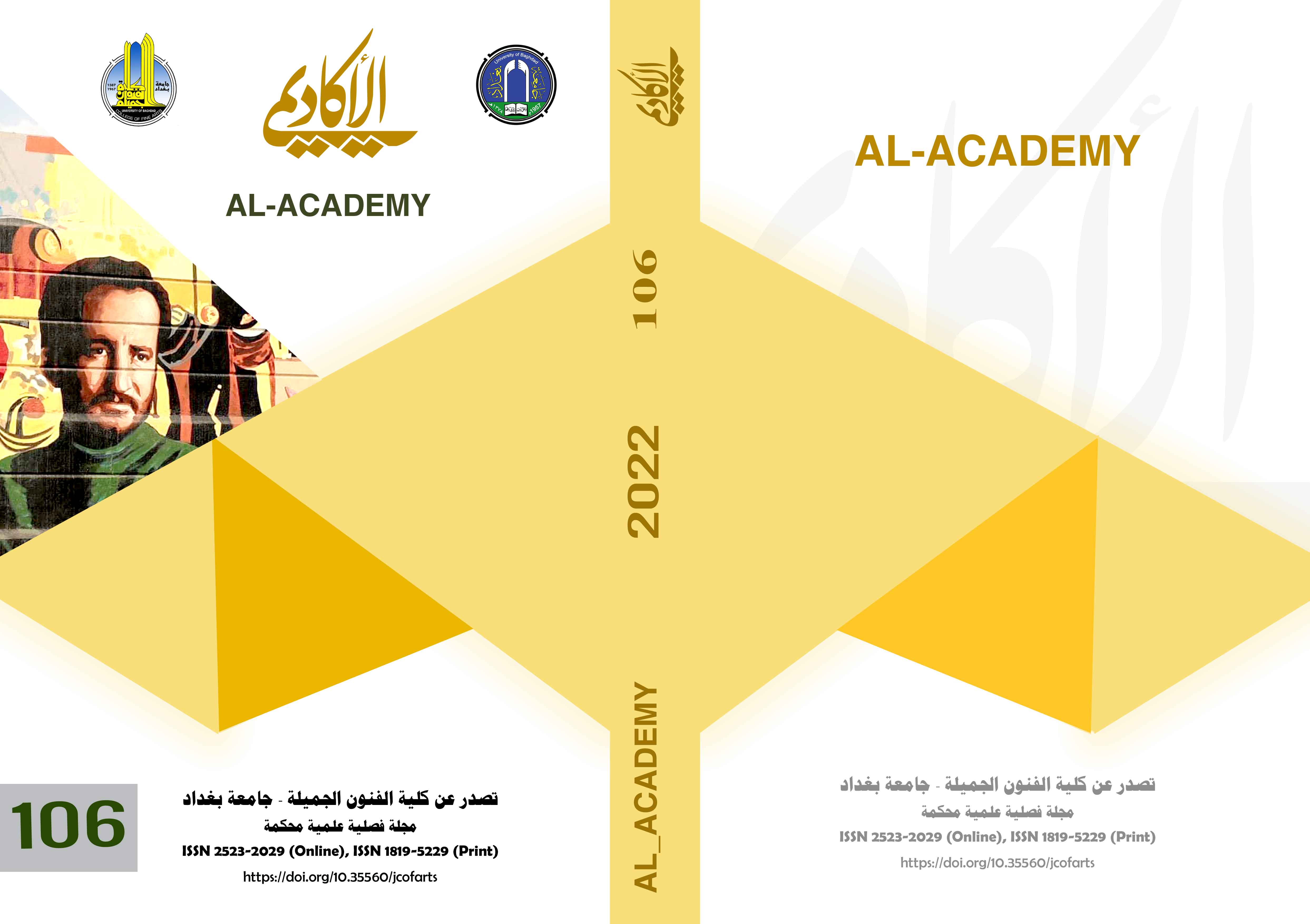Philosophy of values and its epistemological representations in industrial product design
DOI:
https://doi.org/10.35560/jcofarts106/319-336Keywords:
Philosophy of values, epistemology, product designAbstract
The research dealt with the concepts of the philosophy of values and its epistemological variables according to specific propositions represented in their scientific approaches to value theory in the field of industrial design. As the epistemological propositions of the theory of values were dealt with based on the epistemological fields that dealt with the concept and what values are, starting with the modernist propositions and postmodern, passing through the propositions of sociological and psychological thought, which was a prelude to extracting the concepts of value theory and adopting it in the field of industrial product design. The epistemological approaches to value theory in industrial product design were represented in eleven value orientations represented by values: ethical, ecological, functional, use, semantic, brand, self-expression, cultural, rituals, belonging, identity and aesthetic values. After discussing the types of these epistemological approaches to the theory of values in the design of the industrial product according to the nature of each type of value, a number of conclusions were reached, which represented an objective analysis of the ways in which the theoretical concepts of the philosophy of values were transformed into theoretical systems that can be applicable in industrial product design.
References
Abdel Bari, I. H. (2000). social demography. Ain for Human and Social Studies and Research.
Abdul Hai, A. (1981). Introduction to Psychology. Al Khanji Library.
Abdul Muti, A. B. (1990). Social research is an attempt towards a critical view of its approach and its dimensions. University Knowledge House.
Abu Hantash, M. (2000). Principles of Design (3rd ed.). Dar Al-Baraka for Publishing and Distribution.
Ahmed, S. K. (1992). Prevalent values and desired values among a sample of Egyptian families returning from the Diaspora. Journal of Psychology, 1.
Al-Asadi, A. G. (1988). The nature of architecture. University of Baghdad.
Al-Askari, A. S. (2013). Sales Department (Quantitative, Behavioral, and Administrative Introduction). Zahran Publishing and Distribution House.
Al-Hamad, R., & Sabarini, M. S. (1979). The Environment and its Problems. World of Knowledge.
Al-Hamdawi, J. (2015). Deliberations and Plan Analysis (1st ed.). Dar Al-Alukah.
Al-Jabri, M. A. (1997). Issues of Contemporary Thought (1st ed.). Center for Arab Unity Studies.
Al-Kibsi, M. A. (1993). Michel Foucault: The technology of discourse, the technology of power, the technology of body control. Seras Publishing.
Al-Maliki, Q. F. (1998). Islamic architecture. The First International Conference of the Jordanian Engineers Association.
Al-Naim, M. A. (2001). Urban Identity Transformations, in Contemporary Architecture. The Arab Future Magazine, 206.
Awa. Khaled. (1996). Al-Omda in the Philosophy of Values (1st ed.). Talamis House for Translation and Publishing.
Azzam, Z., Hassouna, A. B., & Sheikh, M. Al. (2008). Principles of Modern Marketing (Between Theory and Practice) (1st ed.). Dar Al Masirah for Publishing, Distribution and Printing.
Baxter, K., Courage, C., & Caine, K. (2015). Understanding your users: a practical guide to user research methods. In Understanding your Users (2nd ed.). Elsevier Inc.
Broadbent, G. (1980). building design as an iconic sign system. In Signs, Symbols, and Architecture. John Wiley &Sons.
Cesari, P. (1983). The Value. Oweidat’s publications.
Diab, F. (1966). Social values and customs, with a field study of some social customs. Arab Book House.
Dicken, T. M., & Edwards, R. B. (2001). Dialogues on Values and Centers of Value: Old Friends, New Thoughts. Rodopi.
Fourman, L. S. (2000). Job Enrichment in Extension. District Director Ohio State University Extension.
Harries, K. (2009). The Ethical Function of Architecture. MIT Press.
Hornby, A. S. (2004). xford advanced learner’s dictionary. Oxford University Press.
Ibn Miskawayh, A. A. A. bin M. (2005). Refining Ethics, Purification of Races (Imad Al-Hilali (ed.); 1st ed.). Tali’a Al-Noor for Printing and Publishing.
Imam, A. (2014). Aesthetic form values (1st ed.). Darmajdalawi.
Jibril, M. (1993). Self-Esteem of Outstanding and Academically Outstanding Students. Journal of Human Sciences Studies, 21(2).
Kin caid, D. (2002). Adapting Buildings for Changing Uses: guidelines for change of use refurbishment. British Library.
Latif, S. M. (2001). The Values Inversion according to Friedrich Nietzsche. University of Baghdad.
Middleton, S. (2013). All you need to know about marketing (1st ed.). Dar Al-Fajr for Publishing and Distribution.
Moalosi, R., Popovic, V., & Hickling-hudson, A. (2007). Culture-orientated Product Design. Iasdr07, 1–20.
Moser, P. K. (2015). Epistemology (3rd ed., Issue 2010). Taylor & Francis.
Munro, T. (1986). Aesthetics ( et al A. Richard Harmet (ed.); 1st ed.). Merchandise Mart Plaza.
Mustafa, S. L. (1990). The Islamic Personality in the Architecture of the House with the Courtyard. Architectural Scientific Journal, 6.
Rogers, E. M. (2003). Diffusion of Innovations (5th ed.). Free press.
Ruskin, J. (1898). The Seven Lamps of Architecture.
Saliba, J. (2010). The Philosophical Dictionary (1st ed.). Qirbi.
Salman, A. S. (2008). Ethics in Architecture. University of Technology.
Schmidt, K. F. (2007). Nanofrontiers Visions for the Future of Nanotechnology (Issue March).
Shafiq, M. (2003). Man and Society, an introduction to social psychology.
Venturi, R. (1987). Contradiction in Architecture (S. A. A. Mahdi (ed.); 1st ed.). House of General Cultural Affairs, House of Freedom for Printing.
Wasserman, B., Sullivan, P., & Palermo, G. (2000). Ethics & The Practice of Architecture. John Wiley & Sons.
Yang, C. M., Kao, C. H., Liu, T. H., & Yang, F. H. (2010). Applying TRIZ principles to construct creative universal design. International Journal of Systematic Innovation, 1(1), 49–60.
Zahran, H. A. S. (1984). Social Psychology. The Book World.
Zuo, H., & Jones, M. (2005). Exploration into formal aesthetics in design: (material) texture. Design, 1–11.
Downloads
Published
Issue
Section
License
Copyright (c) 2022 Mustafa yassen jaleel , Jasim Khazaal Baheel

This work is licensed under a Creative Commons Attribution 4.0 International License.













